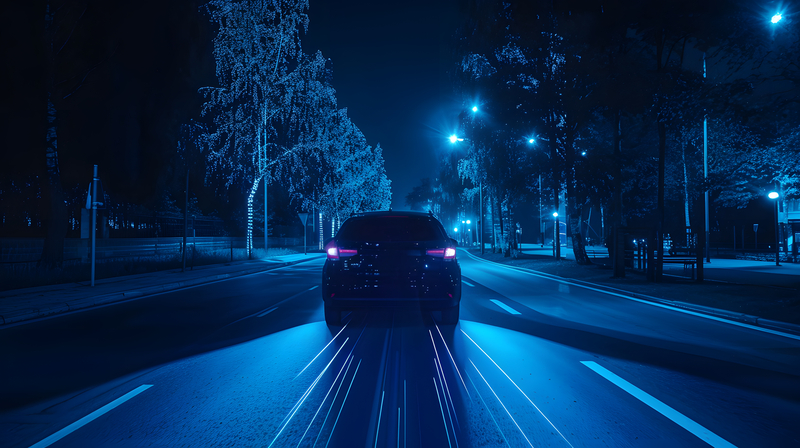
Around two dozen companies are actively involved in the Lidar market today; rather less than, say, three years ago. Automotive – a huge potential market - has been an obvious target for Lidar providers, yet consolidation has still been the name of the game. But why?
“No company can exist forever without a revenue stream, and for automotive Lidar companies it’s near-impossible to make money without major OEM customer wins,” says Elad Hofstetter, Innoviz Technologies chief business officer. “Yet the barrier to winning a new major contract is at an all-time high and without showing a track record of successful Lidar programmes, it’s extremely difficult to win new business.”
Compounding this is the fact that developing Lidar solutions to meet automotive grade standards is “vastly more intensive” than developing a Lidar for a non-automotive application, he says: “Maturing a product to meet automotive grade standards requires huge investment and effort, and many Lidar companies have been left with a choice: consolidate, be acquired or go bankrupt.”

“There will be increased interest in acquiring companies with specialised services that add value” Steven Sheffield, Seyond
There are other reasons, in other sectors. Steven Sheffield, PE, US product marketing and strategy manager at Seyond, identifies what he calls the ‘gorilla in the room’. “Investor-backed start-ups of any kind, really, can’t seem to stomach the sometimes-multiple-year lead times, certification requirements, testing and validation before even getting so much as some side-eye from the public sector for consideration on an upcoming project,” he says.
“Doesn’t matter if you’ve worn the prettiest, most expensive dress to the prom. Given the public domain, purchase - and re-purchase - cycles, safety focus, locked-down networks of the hosts in smart infrastructure, there is a path to success with no easy wins and no shortcuts. It’s a drudge if you are accustomed to winning multi-million dollar contracts every three months. The contracts will certainly come, but only after you’ve studied and understand the customer and have done your certifications and your industry homework.”
The fact so many of the original Lidar companies were start-ups is another major factor in subsequent consolidation, agrees Steve Bird, CEO at Red Fox ID.
“And as is often the case, the technology they were working on turned out to be much harder or too costly to achieve or they just ran out of cash and failed to raise more,” he suggests. “Some just decided it would be better to merge to save what they could. Others sold out to the automotive supply chain or limited their focus on a single market – automotive. Others pivoted away from being a product manufacturer and repackaged their core technology into a component for others to use in a finished product.”
Raul Bravo, president co-founder at Outsight, thinks the market “attracted substantial investment, which funded numerous development teams lacking any real uniqueness”. “As a result, many of these early-stage companies have ceased to exist. Rather than true consolidation, it appears to be a euphemism for bankruptcy.”

In some cases, a rush to public listing “before reaching a sufficient level of industrialisation for their products and incurring substantial annual losses” meant “significant disappointment for stock market investors”. That makes it hard to secure extra cash, leaving mergers as a means of ensuring survival.
Also, he says, the automotive market, which initially fuelled the sector, has not been able to move quickly enough: “[It] has demonstrated its limits to provide the expected growth, as these programmes take many years to enter into mass production except in China. Very few companies anticipated what's happening: the fastest-growing segments are infrastructure-based markets like people flow monitoring in transportation hubs, ITS, and security. This has led to companies without enough cash to survive the long-term cycles of the automotive industry without having the right products for the non-automotive markets.”
So much for the ‘why’ – how much more consolidation is there yet to come? Quite a bit, it appears. “It's difficult to predict definitively ,” says Hofstetter. “But it wouldn't be surprising to witness the consolidation of two to three more companies in the upcoming year, ultimately resulting in a scenario where only a few key industry players remain.”

“Rather than true consolidation, it appears to be a euphemism for bankruptcy” Raul Bravo, Outsight
Companies are acquiring new skills, new features, and new software which should promote their ability to enter new, more specialised domains, thinks Sheffield. “Companies who are ‘full service’ and ‘in-house’ are just going to be more attractive to customers versus those who must piece together solutions with multiple partners,” he says.
“So there will be increased interest in acquiring companies with specialised services that add value. In the engineering consulting world, which is where I’m from, it’s common to see large firms buying other firms who have specialised services. It’s really no surprise, nor much different, to witness it going on in Lidar. As these companies realise they must either build out these services themselves or acquire companies that already have them, the path to new big biz can be streamlined.”
“I doubt this is over yet,” agrees Bird. “There are too many companies chasing the one huge opportunity which is automotive. If you don't win big then you are likely to fail big. When the start-ups were chasing the investment, most if not all were promoting the automotive market as the key area for growth and a rapid return on investment. This market never really materialised in the way many expected. There were a lucky few, but the rest had to resize their business and find new market opportunities.”
Lidar isn’t going away, but the last few years have shown why it needs to be pushed into new areas of interest to continue being an attractive investment. So what Lidar applications will come to the fore as the industry consolidates further?
“For automotive Lidar companies, it’s near-impossible to make money without major OEM customer wins” Elad Hofstetter, Innoviz

Hofstetter thinks it will be those with high volumes like highway Level 3 autonomy, “as opposed to niche applications”. Bravo says Outsight is seeing “tremendous traction” in different segments including kerbside activity monitoring and vehicle traffic measurement; people flow monitoring in transportation hubs; security; industrial applications involving automation but also people safety; and venues where crowd management is required. For the latter, “the full privacy value-added of Lidar is one of the key success factors, but also the much higher precision compared to cameras and its lower cost - thanks to a much lower ratio of sensors per m2”.
Even with consolidation, there is good news, Bravo adds. “There are many Lidar sensor companies that have very competitive products for smart infrastructure applications, which gives the customer the right choice to combine the most appropriate models and brands depending on its context.”
Smart infrastructure will certainly be crucial going forward, agrees Sheffield, who sees “increased interest” in this domain. “Smart infrastructure alone is a multi-billion dollar domain backed by billions in [US] federal grants and state funding, but one must be willing to adhere to the rules - and by rules I mean being willing to make substantial modifications to your product to adhere to well-established industry standards versus moulding them to fit yours. Earn the certifications and be recognised as a consistently high quality, low-cost, out-of-the-box failsafe product, and get on a winning team to win the work. Lidar is, after all, just a component of the overall solution.”
Sheffield concludes: “The $60,000 question is, will they each be patient enough to take the long road to get there?”











